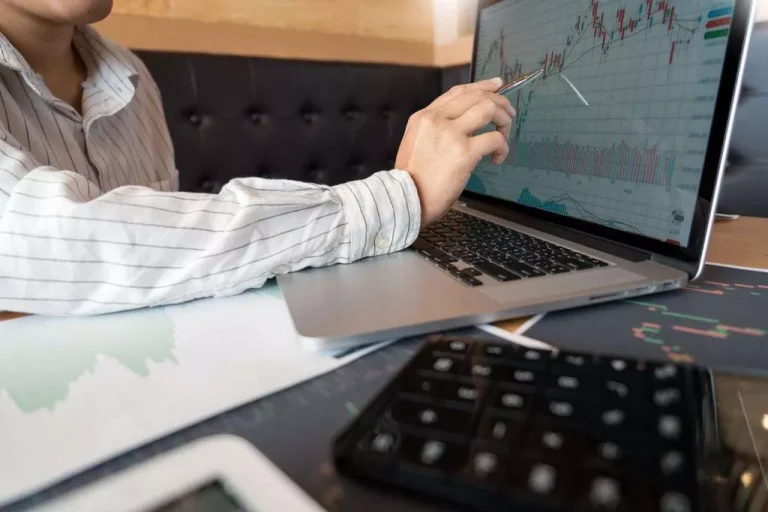Content
Individual traders will typically find that a certain amount of volatility suits their approach and risk tolerance. Therefore, it can make sense to identify and trade markets %KEYWORD_VAR% that meet your preferred level of volatility at any one time. This might involve trading a currency pair that you had not previously considered trading. Some analysts will then find the square root of the variance, which is known as the “standard deviation” of the data set.
Forex: Global Events and Macro Trends
First, Proof of stake stock liquidity highly depends on the company and its trading volume. Blue-chip stocks like Apple or BP typically offer high liquidity, which contributes to smooth transactions with competitive spreads. However, smaller, less-traded stocks may suffer from wider spreads and slower execution, particularly during market volatility.
Forex Volatility: A Trader's Comprehensive Guide to Currency Fluctuations
We just have to look at meme stocks like GameStop and AMC to see that stocks can be volatile under the right circumstances. You can trade both highly volatile markets, or volatility-based assets – such as the VIX – that track the level of uncertainty in https://www.xcritical.com/ the market. The further apart the bands are from the SMA, the more volatile the price has been within the range.

How is market volatility measured?
Deviations from forecasted figures can prompt abrupt and pronounced shifts in price. For example, employment data surpassing expectations may bolster a currency, whereas disappointing GDP figures might lead to its decline. Volatility in forex is a measure of the frequency and extent of changes in the value of a currency. Simply put, moving averages measures the average movement of the market for an X amount of time, where X is whatever you want it to be. The Federal Open Market Committee (FOMC) raised rates 11 times in 17 months and the ECB by 10 times in 16 months to bring inflation down.

Different Types of Volatility Indicators
- Bollinger Bands enable traders to see a smoothed-out version of an asset’s price history.
- Conversely, when the values are lower than 20, it’s a sign of decreasing volatility.
- The size and liquidity of a market dictate how efficiently trades are executed and at what cost.
- Please note that foreign exchange and other leveraged trading involves significant risk of loss.
- This article is for general information purposes only, not to be considered a recommendation or financial advice.
- Traders should adhere to strict risk management rules to avoid significant losses.
Second, trading hours affect market liquidity, making it challenging to trade before and after market close. The forex market revolves around trading currency pairs, such as EUR/USD, and operates globally, making it the largest financial market with a daily turnover exceeding $7.5 trillion (April 2022). It’s decentralised, meaning transactions occur directly between participants across time zones, with no single central exchange. In periods of volatility, the market can move by large amounts, which could see your gains magnified. For the most part, volatility isn’t something that investors pay attention to when it comes to choosing stocks.
It’s important to note that the VIX can remain above or below these levels for significant periods of time, so the signals it gives off might not necessarily indicate an immediate reversal. For example, when the COVID-19 pandemic hit in early 2020, the VIX climbed higher than 80 – a level it hadn’t experienced since the last financial crisis in late 2008. As mentioned above, when the VIX hits highs, it’s often seen as a time to buy the market, and when it makes lows, it’s seen as a bullish signal. However, this strategy should be taken within a wider methodology of technical and fundamental analysis to confirm the entry and exit points the VIX suggests. This is because when the time comes around, the market has usually adjusted to the volatility. Stock trading via CFDs typically incurs higher costs compared to forex, with commissions charged per trade or embedded in spreads.
Understanding their differences—from market size and liquidity to trading costs and risk—can help traders choose the market that best suits their strategy. Traders must understand the factors influencing volatility, use appropriate risk management strategies, and choose suitable tools and techniques to navigate the forex market successfully. While high volatility can offer increased trading opportunities, it also comes with greater risk.
This indicator is similar to BBs, but twice the size of the ATR is used about a 20-period EMA, instead of using two standard deviations. The trader looks for prices to penetrate the bands on either side as a signal to trade. The Keltner Channel, however, does not react as quickly as Bollinger Bands. Additionally, the collective mood of traders, influenced by news, events, and overall market psychology, can incite swift alterations in currency prices. The aggregated sentiment of market participants can significantly dictate the direction of currency movements.
Traders often use Keltner Channels to identify overbought and oversold conditions in the market. When the price reaches the upper band, it may suggest that the currency pair is overbought, and a reversal may occur. Conversely, when the price reaches the lower band, it may indicate that the currency pair is oversold, and a potential upward move may be imminent.

Volatility refers to the measure of how much a currency pair’s exchange rate fluctuates over a certain period of time. It is an essential concept in forex trading as it impacts the profitability and risk of a trade. Understanding volatility can help traders make informed decisions and develop effective trading strategies. Volatility indicators are tools that help traders understand how much and how quickly the prices of assets, like stocks or currencies, are changing. These indicators show how stable or unstable the market is and help traders make informed decisions about buying or selling. By using volatility indicators, traders can get a better idea of the risks involved and potential opportunities in the market.
Alternatively, a market-wide shock can cause all currency markets to become more volatile at the same time. Moving averages are probably the most common indicator used by forex traders and although it is a simple tool, it provides invaluable data. This indicator measures the difference between an asset’s high and low prices over a specified period, combined with its trading volume.
For instance, let’s assume you’re scalping the EUR/USD with a price of 1.0866, aiming to capture 5 pips of profit per trade. You’ve identified a small range and are using a Bollinger Band scalping strategy on a 1-minute chart. Scalping positions are usually held for very brief periods, minimizing exposure to market fluctuations. But as a result, in order for returns to be meaningful, the trade sizes can be larger relative to your balance, which can increase the risk proportionally. Thus, proper risk-management is required to turn a net profit, and depending on your win-to-loss ratio or how often you are right on each scalping trade. However, you have to take into account that the markets usually take anticipated news into account well before it is released.
It’s important to remember that MAs are common, simple analysis tools widely used by investors, which could limit their effectiveness (depending on your approach and implementation). In some cases, a lagging price may represent a legitimate tradeable price in which prices between different venues differ. In other cases, prices between venues update at different times, creating a latency-driven opportunity. The VIX is expressed as a percentage, which fluctuates like any other oscillator. Readings below 12 indicate a low volatility environment, between 12 and 20 indicates normal levels of volatility, and any readings above 20 are seen as a signal of high volatility. Typically, energies are the most volatile commodities, while agriculturals tend to experience less dramatic price swings.


